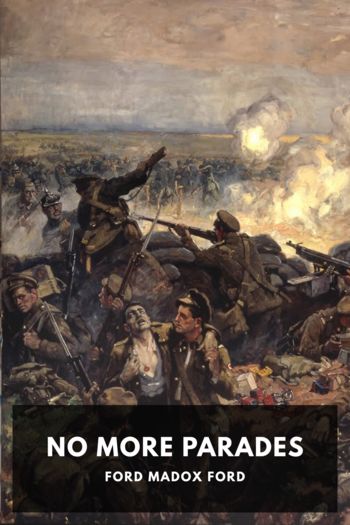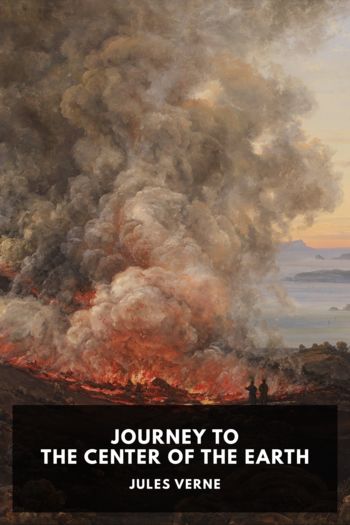The Child of the Cavern by Jules Verne (digital book reader TXT) 📕

- Author: Jules Verne
Book online «The Child of the Cavern by Jules Verne (digital book reader TXT) 📕». Author Jules Verne
On the other hand, the engineer knew Ford to be a clever miner, peculiarly endowed with the instinct of his trade. He had not seen him since the time when the Aberfoyle colliery was abandoned, and did not know either what he was doing or where he was living, with his wife and his son. All that he now knew was, that a rendezvous had been appointed him at the Yarrow shaft, and that Harry, Simon Ford’s son, was to wait for him during the whole of the next day at the Callander station.
“I shall go, I shall go!” said Starr, his excitement increasing as the time drew near.
Our worthy engineer belonged to that class of men whose brain is always on the boil, like a kettle on a hot fire. In some of these brain kettles the ideas bubble over, in others they just simmer quietly. Now on this day, James Starr’s ideas were boiling fast.
But suddenly an unexpected incident occurred. This was the drop of cold water, which in a moment was to condense all the vapors of the brain. About six in the evening, by the third post, Starr’s servant brought him a second letter. This letter was enclosed in a coarse envelope, and evidently directed by a hand unaccustomed to the use of a pen. James Starr tore it open. It contained only a scrap of paper, yellowed by time, and apparently torn out of an old copy book.
On this paper was written a single sentence, thus worded:
“It is useless for the engineer James Starr to trouble himself, Simon Ford’s letter being now without object.”
No signature.
II On the RoadThe course of James Starr’s ideas was abruptly stopped, when he got this second letter contradicting the first.
“What does this mean?” said he to himself. He took up the torn envelope, and examined it. Like the other, it bore the Aberfoyle postmark. It had therefore come from the same part of the county of Stirling. The old miner had evidently not written it. But, no less evidently, the author of this second letter knew the overman’s secret, since it expressly contradicted the invitation to the engineer to go to the Yarrow shaft.
Was it really true that the first communication was now without object? Did someone wish to prevent James Starr from troubling himself either uselessly or otherwise? Might there not be rather a malevolent intention to thwart Ford’s plans?
This was the conclusion at which James Starr arrived, after mature reflection. The contradiction which existed between the two letters only wrought in him a more keen desire to visit the Dochart pit. And besides, if after all it was a hoax, it was well worth while to prove it. Starr also thought it wiser to give more credence to the first letter than to the second; that is to say, to the request of such a man as Simon Ford, rather than to the warning of his anonymous contradictor.
“Indeed,” said he, “the fact of anyone endeavoring to influence my resolution, shows that Ford’s communication must be of great importance. Tomorrow, at the appointed time, I shall be at the rendezvous.”
In the evening, Starr made his preparations for departure. As it might happen that his absence would be prolonged for some days, he wrote to Sir W. Elphiston, President of the Royal Institution, that he should be unable to be present at the next meeting of the Society. He also wrote to excuse himself from two or three engagements which he had made for the week. Then, having ordered his servant to pack a traveling bag, he went to bed, more excited than the affair perhaps warranted.
The next day, at five o’clock, James Starr jumped out of bed, dressed himself warmly, for a cold rain was falling, and left his house in the Canongate, to go to Granton Pier to catch the steamer, which in three hours would take him up the Forth as far as Stirling.
For the first time in his life, perhaps, in passing along the Canongate, he did not turn to look at Holyrood, the palace of the former sovereigns of Scotland. He did not notice the sentinels who stood before its gateways, dressed in the uniform of their Highland regiment, tartan kilt, plaid and sporran complete. His whole thought was to reach Callander where Harry Ford was supposedly awaiting him.
The better to understand this narrative, it will be as well to hear a few words on the origin of coal. During the geological epoch, when the terrestrial spheroid was still in course of formation, a thick atmosphere surrounded it, saturated with watery vapors, and copiously impregnated with carbonic acid. The vapors gradually condensed in diluvial rains, which fell as if they had leapt from the necks of thousands of millions of seltzer water bottles. This liquid, loaded with carbonic acid, rushed in torrents over a deep soft soil, subject to sudden or slow alterations of form, and maintained in its semi-fluid state as much by the heat of the sun as by the fires of the interior mass. The internal heat had not as yet been collected in the center of the globe. The terrestrial crust, thin and incompletely hardened, allowed it to spread through its pores. This caused a peculiar form of vegetation, such as is probably produced on the surface of the inferior planets, Venus or Mercury, which revolve nearer than our earth around the radiant sun of our system.
The soil of the continents was covered with immense forests. Carbonic acid, so suitable for the development of the vegetable kingdom, abounded. The feet of these trees were drowned in a sort of immense lagoon, kept continually full by currents of fresh and salt waters. They eagerly assimilated to themselves the carbon which they, little by little, extracted from the atmosphere, as yet unfit for the function of life, and it may be said





Comments (0)